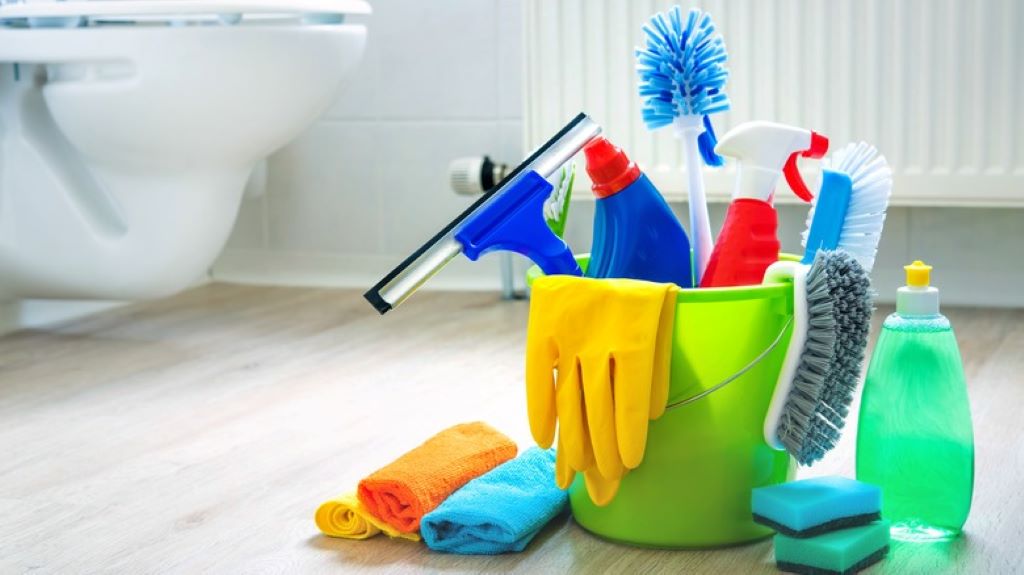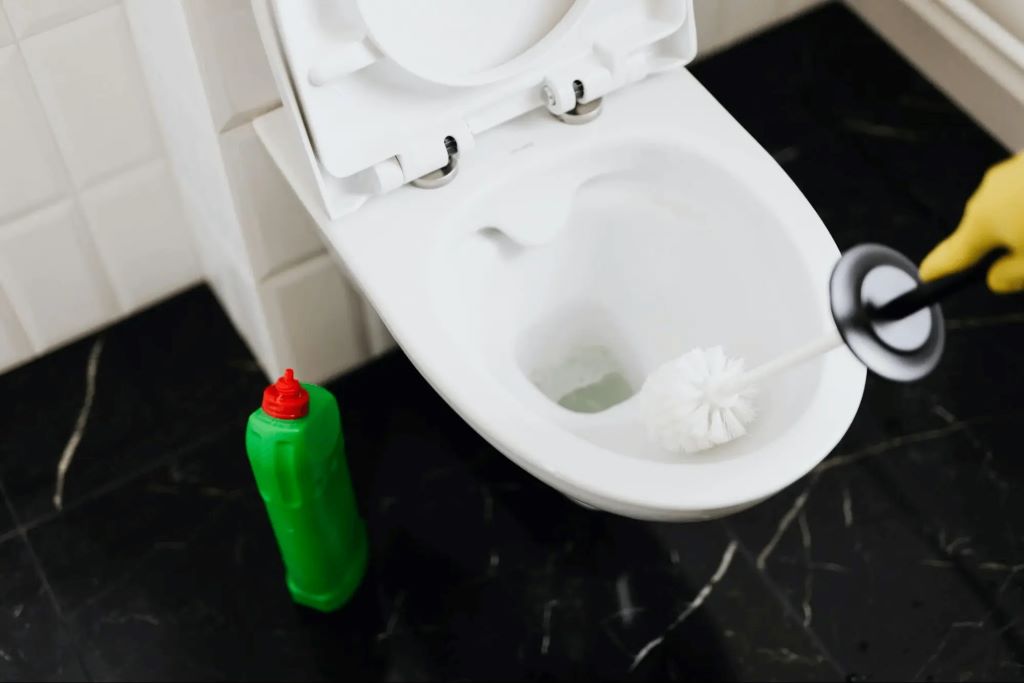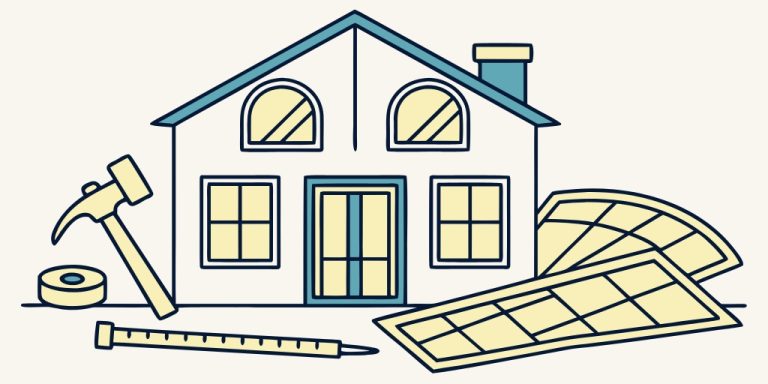When faced with a stubborn toilet clog, most people immediately reach for a plunger or a drain snake. But what if you don’t have those tools handy? You may have heard that common household products—like bleach—can help clear blockages. This leads to the big question: Can bleach unclog a toilet, or is it just a myth?
In this article, we’ll dive deep into how bleach works, whether it’s effective for unclogging, the risks involved, safe alternatives, and the best step-by-step methods to fix a clogged toilet without damaging your plumbing.
Understanding How Bleach Works
Bleach, also known as sodium hypochlorite, is a powerful chemical commonly used for:
- Whitening clothes
- Killing bacteria and viruses
- Removing stains and mold
Its main function is disinfection and oxidation, not breaking down solid matter. This is where the confusion comes in—while bleach is excellent for sanitizing, it doesn’t have the same dissolving power as drain cleaners specifically designed for clogs.
Key takeaway: Bleach is a cleaner and disinfectant, not a clog remover.
So, Can Bleach Unclog a Toilet?
The short answer is: No, bleach cannot unclog a toilet in most cases.
Here’s why:
- Toilet clogs are usually caused by toilet paper buildup, human waste, or foreign objects.
- Bleach does not dissolve these materials effectively.
- At best, it may break down organic matter slightly, but it’s nowhere near strong enough to clear a blockage.
What bleach can do is kill bacteria and remove unpleasant odors caused by a clog. However, it should not be relied upon as your primary unclogging method.
Risks of Using Bleach in a Toilet
While bleach might seem like a quick fix, it comes with significant risks if used incorrectly:
- Damage to Plumbing
- Bleach is highly corrosive. Repeated use can wear down pipes and toilet seals, leading to leaks.
- Toxic Fumes
- Mixing bleach with other household cleaners (like vinegar or ammonia) creates dangerous, toxic gases.
- Environmental Concerns
- Large amounts of bleach can disrupt septic systems and harm beneficial bacteria.
- Temporary Relief, Not a Solution
- Even if bleach seems to help a little, the clog will likely return because the real blockage wasn’t fully cleared.
Pro tip: Only use bleach in a toilet for cleaning and disinfecting, not unclogging.

What to Do Instead of Using Bleach
If your toilet is clogged, don’t panic. There are safe and effective methods you can use that work much better than bleach.
-
The Plunger Method
- A standard flange plunger creates suction and pressure that pushes the clog through.
- Make sure you get a good seal over the hole before plunging.
-
Hot Water and Dish Soap
- Pour a generous amount of dish soap into the bowl.
- Follow with hot (not boiling) water.
- Let it sit for 15–20 minutes to break down the clog.
- This method works especially well for toilet paper and organic waste clogs.
-
Baking Soda and Vinegar
- Add one cup of baking soda to the bowl.
- Pour in two cups of vinegar.
- The fizzing reaction can help loosen the blockage.
- Follow up with hot water after 30 minutes.
-
Toilet Auger (Plumber’s Snake)
- A toilet auger can reach deep into the pipes to break up stubborn clogs.
- This tool is more effective than a plunger for hard or deep clogs.
-
Enzyme-Based Drain Cleaners
- Unlike harsh chemicals, enzyme cleaners use natural bacteria to digest waste.
- They are safe for toilets and septic systems.
When to Call a Professional Plumber
If none of the above methods work, the clog may be more severe—such as a blocked sewer line, tree root intrusion, or foreign object lodged deep in the pipes.
You should call a plumber if:
- Water keeps backing up after multiple attempts.
- You hear gurgling sounds in other drains.
- There’s sewage smell coming from the toilet or drains.
Professional plumbers have advanced tools like motorized augers and hydro-jetting machines to solve tough clogs without damaging your plumbing.
Preventing Future Toilet Clogs
Instead of asking “can bleach unclog a toilet?” again in the future, it’s smarter to prevent clogs from happening. Here’s how:
- Use less toilet paper: Excessive paper is the most common cause of clogs.
- Flush only human waste and toilet paper: Never flush wipes, feminine hygiene products, cotton balls, or paper towels.
- Regular maintenance: Once a month, pour hot water with baking soda into your toilet to keep pipes clear.
- Upgrade to a modern toilet: Newer models use better flushing technology that reduces clogs.
FAQs About Bleach and Toilet Clogs
-
Can bleach dissolve toilet paper?
No. Toilet paper is designed to break down in water, but bleach does not speed up this process.
-
Is it safe to pour bleach into a clogged toilet?
A small amount (1–2 cups) won’t harm your toilet if used occasionally. But it won’t unclog the blockage, and repeated use can damage pipes.
-
Can bleach kill the smell from a clogged toilet?
Yes, bleach will kill odor-causing bacteria, but it won’t fix the clog causing the smell.
-
What should I never mix with bleach in a toilet?
Never mix bleach with vinegar, ammonia, or other toilet cleaners. The combination creates toxic chlorine gas.
-
What’s the best alternative to bleach for unclogging?
The plunger method is the most effective first step. For persistent clogs, try hot water with dish soap or a toilet auger.
Final Verdict: Should You Use Bleach to Unclog a Toilet?
To put it simply: Bleach is not a reliable solution for unclogging a toilet. While it can disinfect and reduce odors, it won’t break down solid clogs effectively. Worse, using bleach incorrectly can harm your plumbing and health.
Related topics:
Detecting Hidden Plumbing Leaks: A Homeowner’s Practical Guide
Tools to Monitor Indoor Humidity Levels: Your Guide to a Healthier Home









+ There are no comments
Add yours